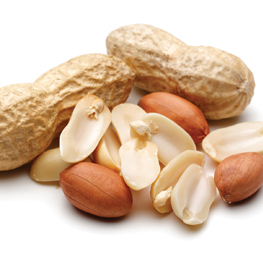
Party preparations are well underway for your child’s birthday, and you’re told that one of the guests is allergic to peanuts and/or tree nuts. You can’t help but worry a little. What do you feed them? What if they have a reaction? Hosting a young child with any allergy can seem like a daunting task - at first. Here are a few tips to help you feel more prepared and, ultimately, more comfortable when faced with a peanut and tree nut allergy at your next party.
Be open and honest. Communication is key to feeling prepared and comfortable. Be honest about your level of comfort, ask questions, and work out a situation that you and the child’s parent feel good about. I’m a parent of a child with a peanut and tree nut allergy, and I know it can be overwhelming at first. I’m more than willing to provide snacks for my daughter, or even stay at the party, if that helps a parent feel more comfortable. The last thing I want to do is cause more stress on party day.
Keep food fresh and simple. If you decide to serve food at the birthday bash, serving fresh fruit and veggies is a safe option. Avoid serving peanuts, peanut butter, or tree nuts to any guests during the party. Be sure to carefully read package labels when selecting any dips, pre-packaged snacks, crackers, bread, baked goods, and candy. Ensure counters, tables, utensils, bowls, and hands are thoroughly cleaned with soap and water prior to food preparation, and ensure the food does not come into contact with any peanuts or tree nuts. Cross-contamination is always a concern. For more tips to avoid cross-contamination in your home, visit foodallergycanada.ca/allergy-safety/at-home.
Know what to look for on product labels. Both peanuts and tree nuts have been designated as priority allergens by Health Canada, and as such, manufacturers are required to have them clearly labeled on both domestic and imported pre-packaged products. Whether you’re purchasing candy, prepackaged snacks, or chocolate chips for cookies you’re going to bake, avoid any product that has the word ‘peanut’ or ‘tree nut’ listed in the ingredients. Keep in mind, a peanut-free symbol on the front of a package may not necessarily mean the product is also tree-nut free. Peanuts and tree nuts belong to different plant families (peanuts are legumes, like peas or beans, but the peanut protein is more similar to that of a nut).
A person can be allergic to one or the other, or both. Read the ingredient list to be sure.
Although not required by Health Canada, some manufacturers also include precautionary statements such as ‘may contain’ or ‘processed in a factory that also processes’ peanuts or tree nuts. These products should also be avoided. Check with the child’s parent if you’re unsure; they may have products they use regularly or have verified with the manufacturer. For more information on priority allergens in Canada, visit hc-sc.gc.ca/fn-an/securit/allerg/fa-aa/index-eng.php.
Avoid bulk bins and bakeries. The concern with buying candy from bulk bins or buying cakes from many bakeries is cross-contamination. In a grocery store, bulk bins are often found next to nut bins, and it’s easy for scoops to be shared between bins or for nuts to end up mixed into the candy bins. Also, many bakeries cannot guarantee their products are peanut- and tree nut-free because they use peanuts or tree nuts in some of their products. Make sure candy is purchased from a package where you can read the label. If you are purchasing a cake from a bakery, let the parent of the child with the allergy know; they will likely send a separate special treat for their child.
Encourage hand washing. Hand washing is a very simple yet effective way for children with a food allergy to protect themselves from ingesting anything dangerous they may have touched. And there should also be a simple reminder to everyone at the party to wash their hands before eating.
Know what to do in case of an allergic reaction. Be clear on what symptom(s) to watch for and what steps to take in case of an allergic reaction. Be sure you know how to use an epinephrine auto-injector before the party. Don’t be afraid of it. Experts agree, epinephrine is the first line of defence, not a last resort. If you suspect a child is having an allergic reaction, inject. The child will still need to get to a hospital right away, but using an epinephrine auto-injector is an imperative first step.
Like anything new, you may feel overwhelmed by a food allergy at first, but it does get easier to handle over time. I hope these tips help you feel more prepared to host a child with a peanut and/or a tree nut allergy at your next party.
Miranda is a married mother of two. Her oldest daughter has a peanut and a tree nut allergy.
Calgary’s Child Magazine © 2024 Calgary’s Child